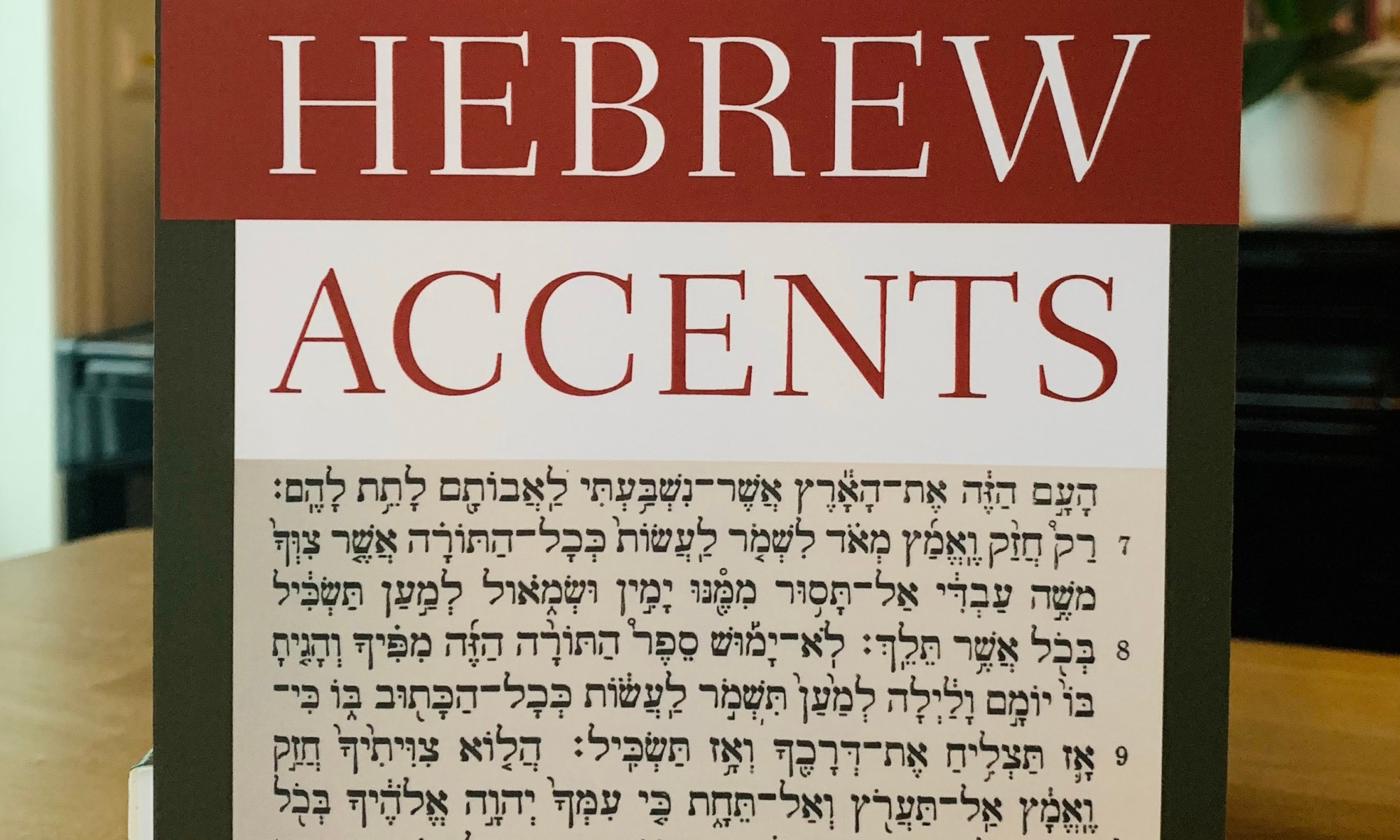Mark Futato—the Robert L. Maclellan Professor of Old Testament at Reformed Theological Seminary—has written a fantastic introduction on Hebrew accents. You’ve gone through the Hebrew grammars, but you still don’t know what those little lines are. But aside from a few grammars, you probably haven’t read more than a few sentences on the accent marks. Futato’s book is not an extensive, in-depth treatment of Hebrew accents. Instead, as an introduction, it will teach you enough to “eliminate perplexity and make interpretive friends of the accents” (14).
Chapter one introduces the three jobs of the accents:
- They show where the stress falls on a word.
- They provide insight into the sense of the text (think punctuation and syntax).
- They show how the text was to be chanted.
Futato surveys the first and third jobs in this chapter. He looks at fifteen different symbols related to word stress (which helps with pronunciation). Futato ends with four miscellaneous symbols that, while not accents, are related to the accent system.
Chapters two–four cover the accents in twenty-one of the Old Testament books (Psalms, Job, and Proverbs are covered in chapter five). Chapter two covers disjunctive accents, which Futato divides into four groups. The first two groups, the major disjunctive accents, are so important that Futato writes, “If the only thing you learn about the Hebrew accents is how these major disjunctive accents work, your ability to read the Hebrew Bible will be significantly enhanced” (36). Futato provides examples for each of the eighteen major and minor disjunctive accents. Sometimes he’ll note the sensitivity of an English translation to the Hebrew accent system (like the NIV in Genesis 1:28). He then provides two ways of visualizing the disjunctive accents as well as providing a practice reading of Genesis 1:2 and 1:3. Although these “markers are not above criticism, we can think of them ‘as an early and relatively reliable witness to a correct interpretation of the text’” (23).
Chapter three covers the conjunctive accents. These accents join words together. This chapter is shorter than the previous because there is no hierarchy of strength as with the disjunctive accents. There are also fewer accents.
Chapter four shows us the use of studying the accents when it comes to interpreting my the Old Testament. Why not just crack open a commentary? The accents in the Masoretic Text “provide an ancient commentary on the syntactic relations of every word in every verse of the Hebrew Bible” (67). Sometimes the accents make a subtle—but still important—difference in meaning, and other times they make a major difference. Futato looks at examples of subtle differences in Genesis, Deuteronomy, and Job, and major differences in Genesis and Deuteronomy. Futato ends with three examples where the Masoretic accents appear to be incorrect.
One subtle difference is how it appears in Genesis 10:21 that Japheth is the older brother of Shem, while the grammar and accents point to Shem being the elder brother. One significant difference is that, of the parenthetical material in Genesis 6:4, the evidence points to the fact that, as the ESV says, “the Nephilim were on the earth in those days, and also afterward.” But how did they show up “afterward”? According to Futato, “the cohabitation… took place both before and after the flood,” as we also see in Numbers 13:33 (81).
Chapter five provides a brief overview of accents in the Psalms, Proverbs, and the poetical sections of Job. Futato ends by looking at all of Psalm 29. Appendix one provides a concise summary of Israel Yeivin’s guide “to the devotion of simple phrases and short verses” (101). He summarizes these in four points with a fifth point supplemented with a paragraph from Fuller and Choi. Appendix two lists articles, books, and references works for further study.
Recommended?
If you are digging into Hebrew, I would highly recommend this book. Futato is clear and to the point. He provides charts and different ways to visualize how the accents work. There are larger reference works on the accent system. If you never pick up the larger books, Futato’s book on its own will help you understand and be both more familiar with and confident of the accent system. If you do, Futato’s book will be a stepping stone to those books (like as this one with practice exercises). I wasn’t taught the accent system when I took Hebrew so I am pleased to have this book.
Lagniappe
-
- Author: Mark D. Futato, Sr.
- Paperback: 128 pages
- Publisher: Zondervan Academic (June 30, 2020)
Buy it on Amazon or from Zondervan Academic
Disclosure: I received this book free from Zondervan Academic. The opinions I have expressed are my own, and I was not required to write a positive review. I am disclosing this in accordance with the Federal Trade Commission’s 16 CFR, Part 255 http://www.access.gpo.gov/nara/cfr/waisidx_03/16cfr255_03.html.
Amazon Affiliate Disclosure: As an Amazon Associate I earn from qualifying purchases.


This is literally what I have been wanting to dive into! I was pretty bummed that none of my formal Hebrew studies in seminary felt with the accent system. One of the profs I read with has taught me just a little and it was so helpful. Cant wait to order this volume 🙂
LikeLiked by 1 person
Nice! Yeah There was only one teacher I know of who might have taught the accents in his class (Fuller), but I don’t actually know if he did. He has a decent-sized section on the accents in his intro Hebrew book though.
LikeLike
Nice to know this is available Spencer. Thanks for the review!
LikeLiked by 1 person
You’re welcome, Randy!
LikeLike